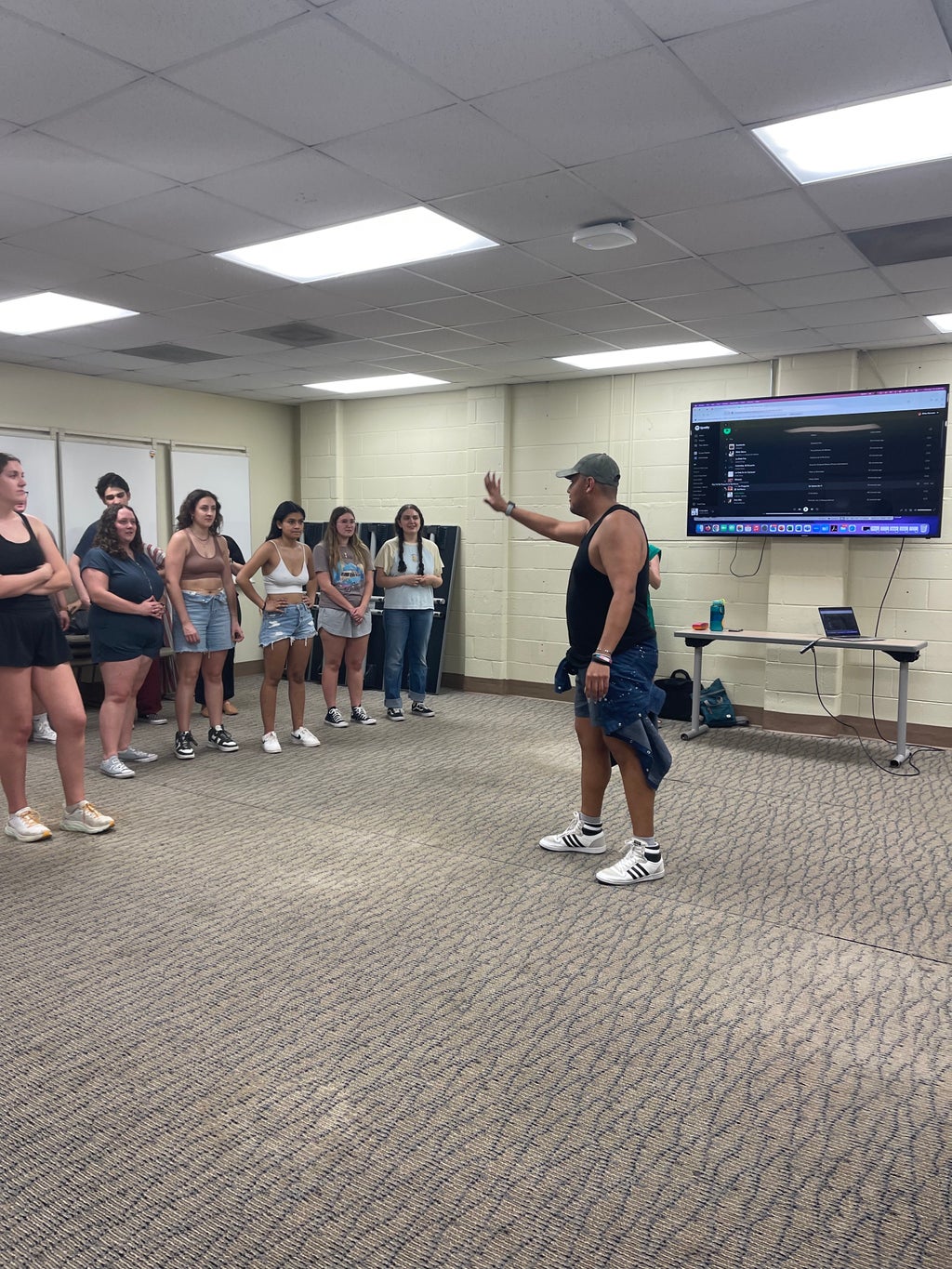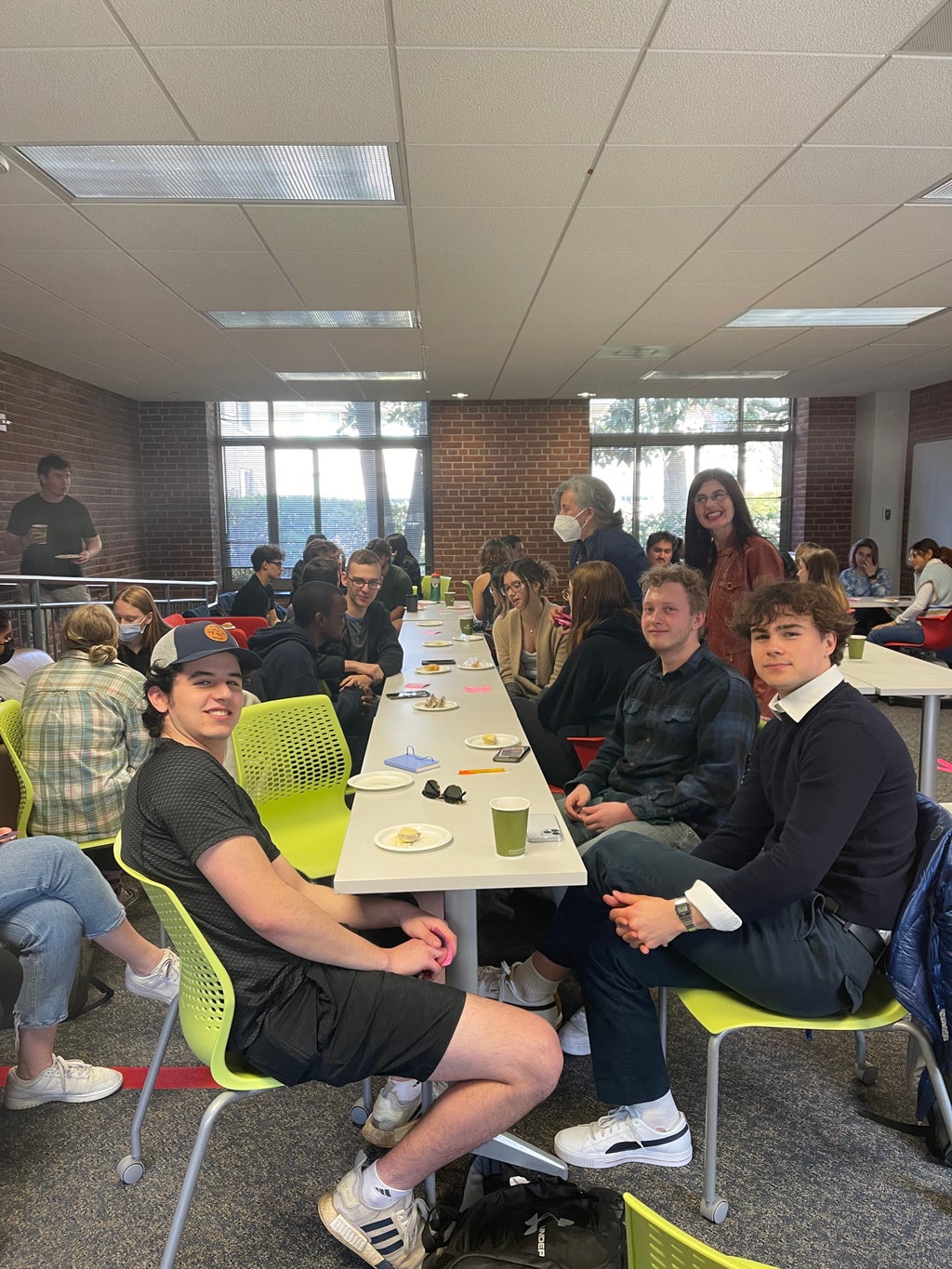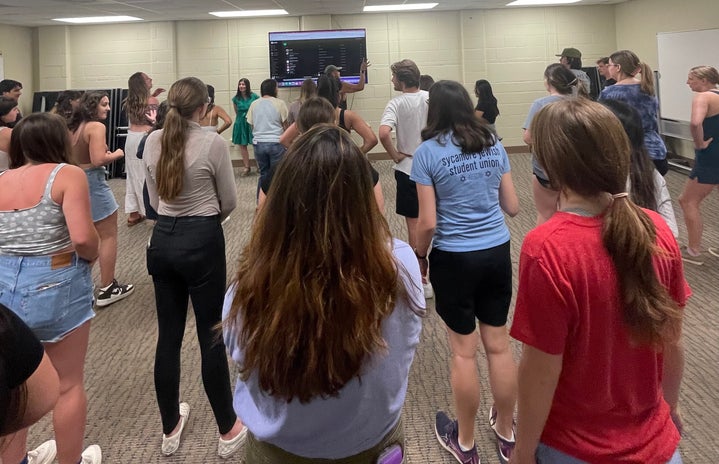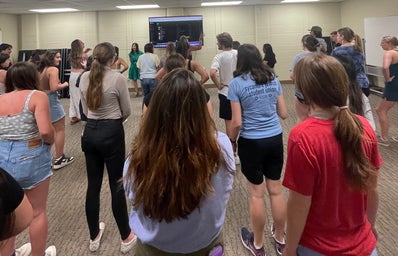A Review of the Various World Language and Cultural (WLC) Events This Semester
On April 13, the World Languages and Culture (WLC) department at American University organized an event surrounding Latin American dance formats. This workshop was one of multiple events under the series “Tertulias”, held this semester by WLC to encourage students to speak outside of class. Students returned to the April 13th event after last month’s popular event, “Cafés Notables de Buenos Aires”.
Eric Ruiz, a dancer and fitness instructor, taught a lesson in Merengue, Bachata, Salsa, and Reggaeton to students in the Spanish department. Ruiz has taught dance classes across the country, including at George Washington University and the White House. Ruiz was even voted Best of DC Best Dance Class by the City Washington Newspaper.
Spanish-speaking students flocked to MGC 330 with no experience and only their interest in music, dance and community.

Eric Ruiz demonstrating the various rhythms to students in MGC
Ruiz taught students selected rhythms for each dance genre and the history of the genre. Ruiz focused on the most popular rhythms such as Merengue and Salsa. Merengue originated in the Dominican Republic at the beginning of the 19th century and was exported to various countries in Latin America.
Ruiz played traditional music for each genre, consisting of instruments such as accordion and tambourine. Ruiz’s motive was to unite students in a fun way and teach them to embrace dance genres from other countries and cultures.
“There are lots of potential fun dances we can learn, and we should really embrace the Spanish culture. It can bring a lot of joy to an otherwise gloomy college environment,” said Carmine Miklovis, a first-year School of International Service and Spanish student.
The dance teachers in Ruiz’s childhood encouraged him to break through his shell when he was a shy adolescent, so Ruiz wants to do this for all his students.
“I think there are certain dances with different rhythms that can go a long way, depending on the vibe of the venue, but after this I feel well-equipped to go anywhere with these dances,” Miklovis said, expressing confidence in his newly acquired skills in rhythm.
The WLC hosts several events each semester.
“I am part of the organizing committee and I can tell you that we have several events – we try to promote all the languages we teach and show that it is not just about verb conjugations,” said Carmen Cacho, a Spanish language professor at AU.
Last month, the WLC hosted another event titled “Tertulia: Cafés Notables de Buenos Aires,” where AU Spanish professors held an information session on Buenos Aires’ famous cafe scene. The event welcomed American University Spanish students to Gray Hall on March 1 and was led by professors Carmen Cacho and Carmen Ruzza from the Spanish Department.
Ruzza kicked off the event by discussing Argentine culture and history, highlighting hundreds of influential Argentines such as Eva Peron, Pope Francis and Lionel Messi.
The turn of the 20th century marked a great wave of European immigration to Argentina, establishing more than 70 to 80 “notable bars” in Buenos Aires. Argentina’s historic coffee scene contributes to Washington, D.C.’s cultural heritage, showcasing its architecture and antiquity.

Students enjoy Argentinian desserts while chatting with other Spanish students
Ruzzo recommends downloading the “54 Bares” app before traveling to Buenos Aires’ famed cafe scene. The app lists the city’s most notable cafes with customer reviews. One of the most popular and historic bars among tourists is Café Tortoni, established in 1850. Delicacies you can expect to see in notable bars are Medialunas, Alfajores, Dulce de Leche, Cortados, and Tostados de Jamón y Queso, with the famous Iberian ham.
Students chatted with other Spanish-speaking students while enjoying pastries from a local Argentinian bakery for the remainder of the event.
“A lot of students are nervous about verbally practicing a language,” said SIS sophomore Isaac Dilorio, who attended the event. “But the teachers created a welcoming environment. I think that if students find partners to speak Spanish, they will learn faster than if they strictly study vocabulary and grammar.”


